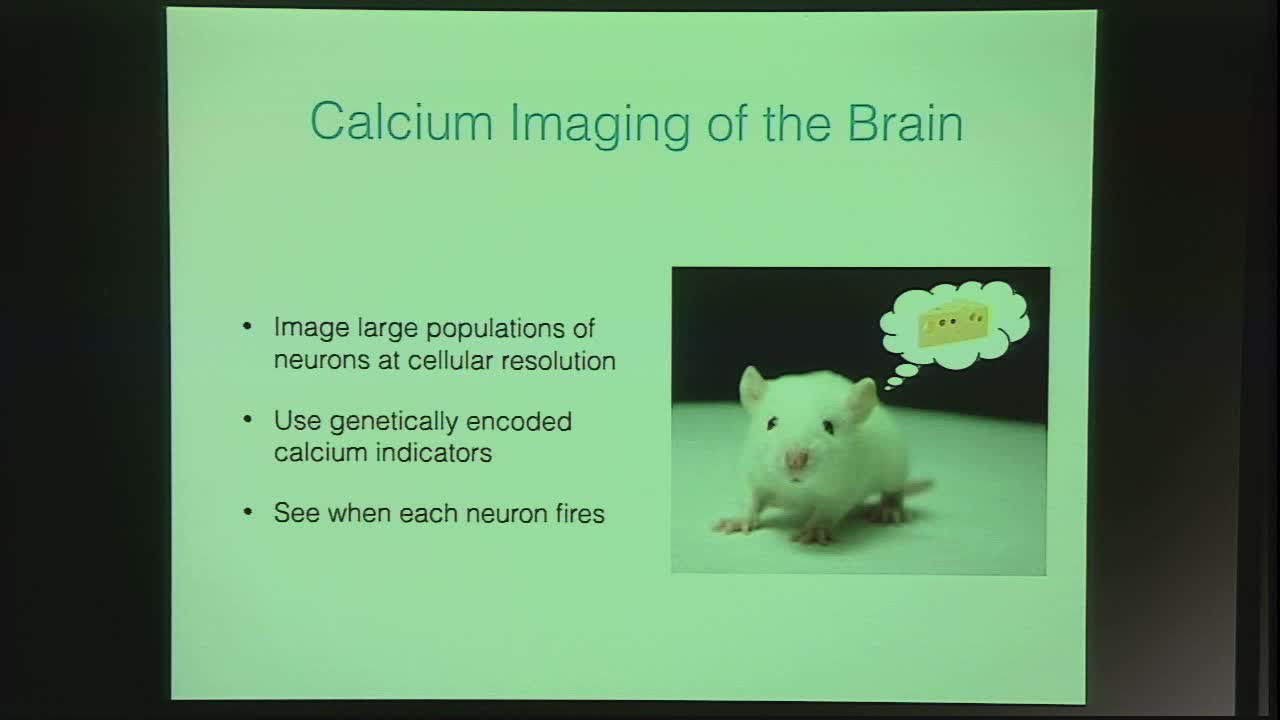Fast spike train inference via l0 optimization
Presenter
April 23, 2018
Keywords:
- calcium imaging, changepoint detection, functional pruning, dynamic programming
Abstract
In recent years, new technologies in neuroscience have made it possible to measure the activities of large numbers of neurons simultaneously in behaving animals. For each neuron, a fluorescence trace is measured; this can be seen as a first-order approximation of the neuron's activity over time. Determining the exact time at which a neuron spikes on the basis of its fluorescence trace is an important open problem in the field of computational neuroscience.
Recently, a convex optimization problem involving an ℓ1 penalty was proposed for this task. In this paper, we slightly modify that recent proposal by replacing the ℓ1 penalty with an ℓ0 penalty. In stark contrast to the conventional wisdom that ℓ0 optimization problems are computationally intractable, we show that the resulting optimizationproblem can be efficiently solved for the global optimum using an extremely simple and efficient dynamic programming algorithm. Our C++ implementation of the proposed algorithm runs in a fraction of a second on fluorescence traces of 100,000 timesteps. Furthermore, our proposal leads to substantial improvements over the previous ℓ1 proposal across a wide range of calcium imaging data sets.
This is joint work with Sean Jewell (University of Washington), Toby Hocking (McGill University), and Paul Fearnhead (Lancaster University).
